Ask Ethan #41: Dating the Distant Universe
How do we know how old the most distant objects we see actually are?
“Sometimes a person has to go a very long distance out of his way to come back a short distance correctly.” –Edward Albee
It’s finally happened here on Ask Ethan: for the very first time, someone who’s been sending in their questions and suggestions is getting a second one answered! Our reader garbulky’s first submission was selected all the way back for Ask Ethan #11. Well, lightning has struck twice, because this week, this was the question that caught my eye:
We were talking about the 12 billion year old supernova and [I] was asked ‘how do we know it is that old?’ I gave an answer that it had something to do with the speed of light and time taken to get here. The follow up was what if we lived in a different place in the universe? How would we then know how old it was? And wouldn’t our answer be different?
The speed of light is, of course, finite, and this tells us something very important about some distant objects in the Universe.
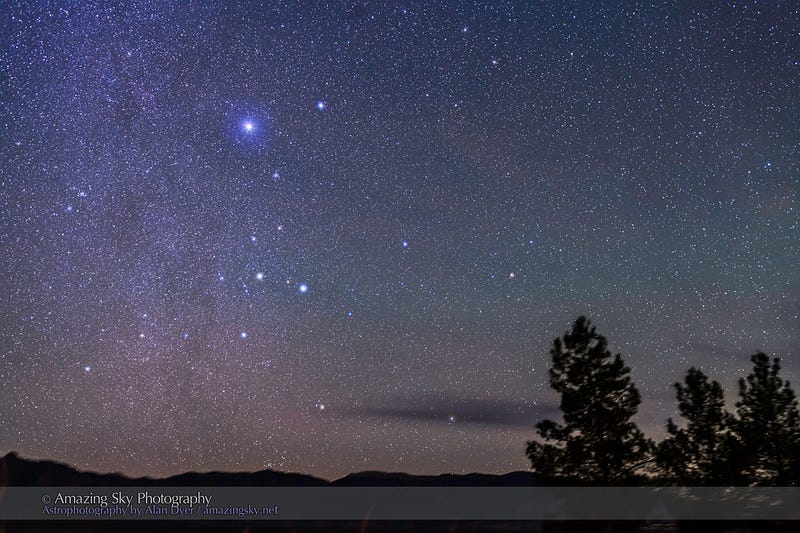
This is the brightest star in the night sky: Sirius. It’s located a distance of 8.6 light-years away, which means the light reaching us right now was emitted from it 8.6 years ago. It also means that if someone at the location of Sirius had the technology to view us, they’d see Earth exactly as it was on November 4, 2005, with Israel mourning the 10th anniversary since Rabin’s assassination, the French riots in full swing and massive protests taking place against US President Bush.
It’s relatively straightforward to figure out how far back in time we’re looking for an object like a star in our galaxy: you measure its distance, and since you know the speed of light, you can compute the light-travel-time. This is true for any two points in the Universe that remain at approximately the same distance from one another while the light travels.
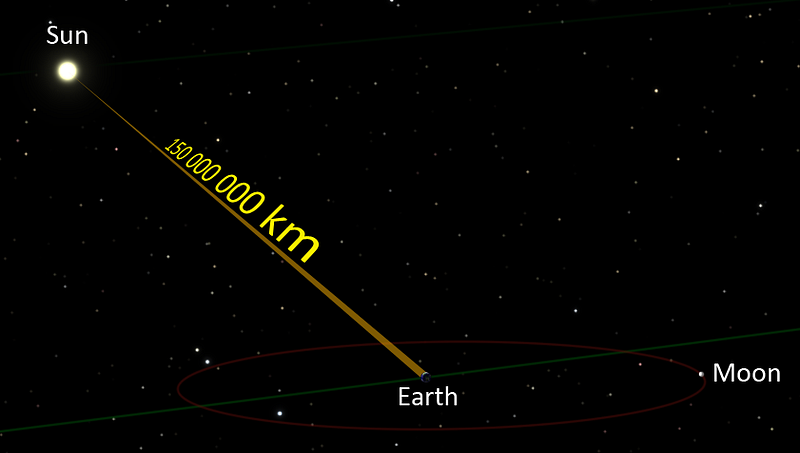
We can do an outstanding job of figuring out what the distance is to various objects by learning about how they work. For example, certain types of stars vary in their intensity over time, and there’s a very close relationship between the period of variability of these stars and their intrinsic brightness.
So if you can measure how long it takes a variable star to cycle from bright-to-faint-to-bright again, and you can identify the class/type of star it is, you can learn how far away from you it is.

This method tells us the distance to star clusters, globular clusters and nearby galaxies, and then other relationships between properties that these galaxies exhibit (such as rotation properties, surface brightness fluctuations, or velocity dispersions) allow us to figure out how far away the even more distant objects in the Universe are.

And finally, we can use supernovae — particularly the well-understood ones that come in a very standard brightness: the Type Ia supernovae — to measure distances very accurately to the most distant places in the Universe where they go off. Even, as garbulky alludes to, if they went off billions of years ago.
But there’s a problem with simply measuring the distance to these objects and trying to calculate the amount of time that’s passed the way we would for, say, Sirius. The problem is this: most of the Universe isn’t remaining at the same distance from Earth, not even approximately. Because the Universe isn’t a static place: it’s expanding!
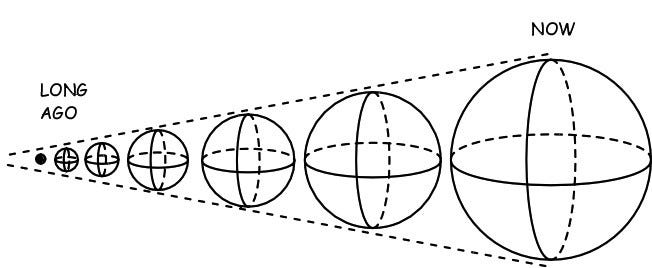
It’s space itself that’s expanding, which means everything in it that isn’t gravitationally bound to us is expanding away from us over time. This certainly complicates matters, and was a source of great difficulty in determining how far back in time we were looking — when we viewed a very distant object — for most of the 20th century. Because, you see, it’s not like you can take a distant galaxy, measure the distance to it, and immediately know all of the following:
- How far away it was from us when the light was emitted,
- How far away it is now that the light is being received, and
- How long the light took along its journey to reach your eyes.
For that, you’d need a little more information than just the object’s distance now.
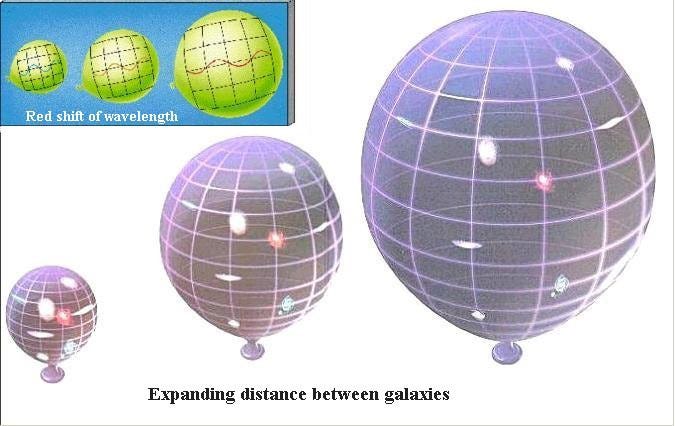
What you’d really need are two more pieces of information. First, you’d need to know the entire expansion history of the Universe, or at what rate it was expanding when the light left the distant object, what rate it’s expanding at now when you’re receiving that light, and what rate it expanded at during all that time in between.
Sound daunting? It’s actually very straightforward for one simple reason: Einstein’s theory of gravity — General Relativity — doesn’t give us many options! If we can measure the expansion rate now (which we’ve been able to do since the 1920s), and we can figure out what the energy content of the Universe is, then we know the entire expansion history of the Universe, going all the way back to the Big Bang!

And we do know that; we’ve learned that very well over the past three decades or so!
So what’s the second piece of information? We just have to measure how much the light from the object we’re observing has redshifted. As the fabric of the Universe’s space expands, the wavelength of light in your Universe stretches as well, meaning your light turns redder in color. But this is fantastic, because all of your light shifts towards the red! And we know how atoms, stars, and light behave, so all we need to do is make the appropriate measurements to know exactly how much the light of a distant object redshifts by.
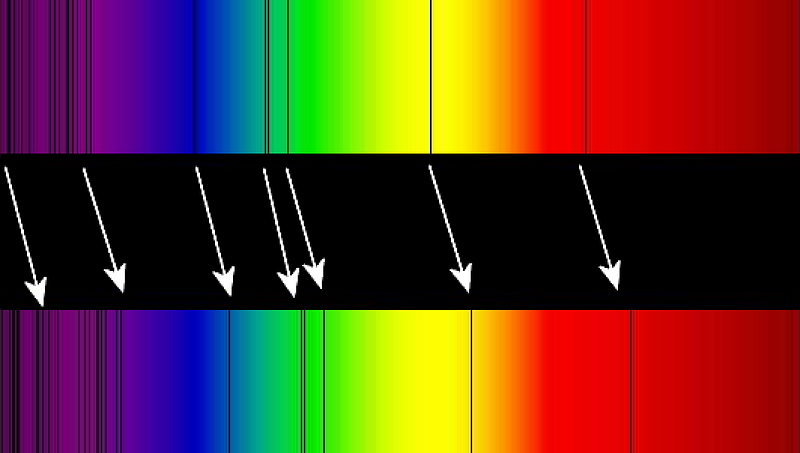
So that’s it! You measure the distance to the object using any number of methods — for a supernova, you measure its light-curve — and you also measure the object’s redshift (spectroscopically, for a supernova).
You take those two pieces of information, along with what we know the expansion history of the Universe to be, and we can figure out exactly how much time has elapsed in between the time when the original photon was emitted and when it arrived at our eye.

And that’s how we know how long ago any phenomenon we’re looking at in the Universe happened! Since, in fact, we know that the Universe is 13.82 billion years old since the Big Bang, we can figure out how old the Universe was when the light was emitted from each and every object we look at!
Thanks for a great question, and if you’d like to have a chance at choosing the subject of our next Ask Ethan column, send in your questions and suggestions here!
Enjoyed this? Leave a comment at the Starts With A Bang forum on Scienceblogs!





